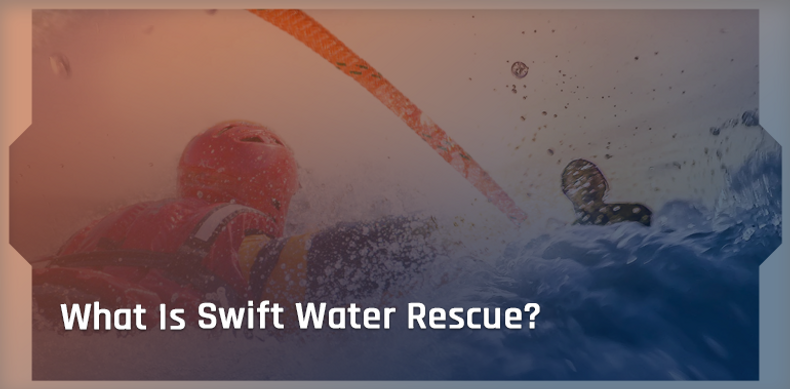Swift Water Rescue, is a specialized category or set of technical rescue, where rescuers are trained to work in situations with extremely fast-moving water. In layman’s terms, Swift Water Rescue is often referred to as White Water Rescue.
Swift Water Rescue techniques are used by firefighters, flood rescue technicians, commercial river guides, private river runners, and military special forces. This type of work is reserved for extraordinary types of people who are incredibly brave, quick on their toes, and at the top of their fitness game.
In this article, we will be discussing Swift Water Rescue in general terms, with information about what types of applications it is used in, the special skills required, and some of the gear that is commonly used in this field. Without any further build-up, let’s get this discussion started!
Swift Water Rescue Applications
As we mentioned above, the types of techniques are used by many different types of professionals, from firefighters and military special forces to commercial river guides.
The most common situations where Swift Water Rescue strategies are used are in rescue operations during flooding scenarios and in accidents where people are generally involved in recreational river activities like white water rafting, hiking/ and fishing.
In the case of emergency responders, Swift Water Rescuers strictly adhere to ICS, or Incident Command System strategies. ICS creates a chain of command that fosters cooperation between members of a rescue team.
The Unique Risks Of Swift Water
Swift Water Rescuers face some very serious and unique dangers in their line of work. These extremely treacherous situations require a high level of seriousness from the people who choose this type of career path.
Risk Factors In Swift Water:
- The Speed Of White Water
- Rocks, Trees, & Other Obstacles
- The Risk Of Hypothermia In Extremely Cold Water
- How Highly Turbulent Water Can Capture A Swimmer
General Skills Required
Emergency response workers using Swift Water techniques need to become fluent in Incident Command Systems. This helps to ensure that everyone involved knows their role in an effective rescue.
It is probably obvious that this type of work requires high proficiency in swimming and high levels of physical fitness. Some other skill sets that Swift Water Rescue requires are a little less obvious though.
Skills Used In Swift Water Applications:
- Paddling
- Quick Thinking
- High Swimming Proficiently
- Knowledge Of Rope Systems
- Risk Assessment & Management
- Familiarity With How Water Moves
- Communication Skills To Coach Victims
- The Ability To Throw Rope Bags With Accuracy
Skills With Ropes
Swift Water Rescue requires a knowledge of ropes and rope systems, but we should discuss this in a little more detail. Perhaps the most important skill in Swift Water Rescue involving ropes in an in-depth knowledge of how to use a Mechanical Advantage System. Due to the nature of fast-moving water, this skill is used to help rescuers gain life-saving leverage to counter the water’s force.
Rope Related Skills Used:
- Rigging
- Belaying
- Rappelling
- The Use Of Lifelines
- Creating Prusiks & Other Hitches
- Knowledge Of Friction Wraps & Friction Points
- A Fluent Understanding Of Mechanical Advantage Systems
Some Specialty Skills Applied In Swift Water Applications:
- Clutch Rigs
- Body Anchors
- Friction Wraps
- Tying Paired Prusiks
- Diagonal Rope Systems
Gear Commonly Used In The Field
There are ropes made specifically for Swift Water Rescue which have close to zero water retention and can float. They need to have high visibility and are made with incredibly robust materials such as Dyneema and Polypropylene. These ropes are incredibly buoyant and need to be easy and comfortable to hold.
Some Other Gear Used In Swift Water Rescue:
- Dry Suits
- Lifelines
- Carabiners
- Paddle Crafts
- Dynamic Ropes
- Hand Ascenders
- Descent Control Devices
- Helmets & Other Personal Protective Equipment
The Big Wrap Up
Swift Water Rescuers are some of the bravest people out there, putting their lives on the line regularly to keep others safe. This line of work needs to be taken seriously and rescuers deserve the utmost respect. Hopefully, this article gave some valuable insight into some of the things this type of work entails. If you have been reading because you are getting ready to start a career in Swift Water Rescue, we salute you and wish you the best of luck!





